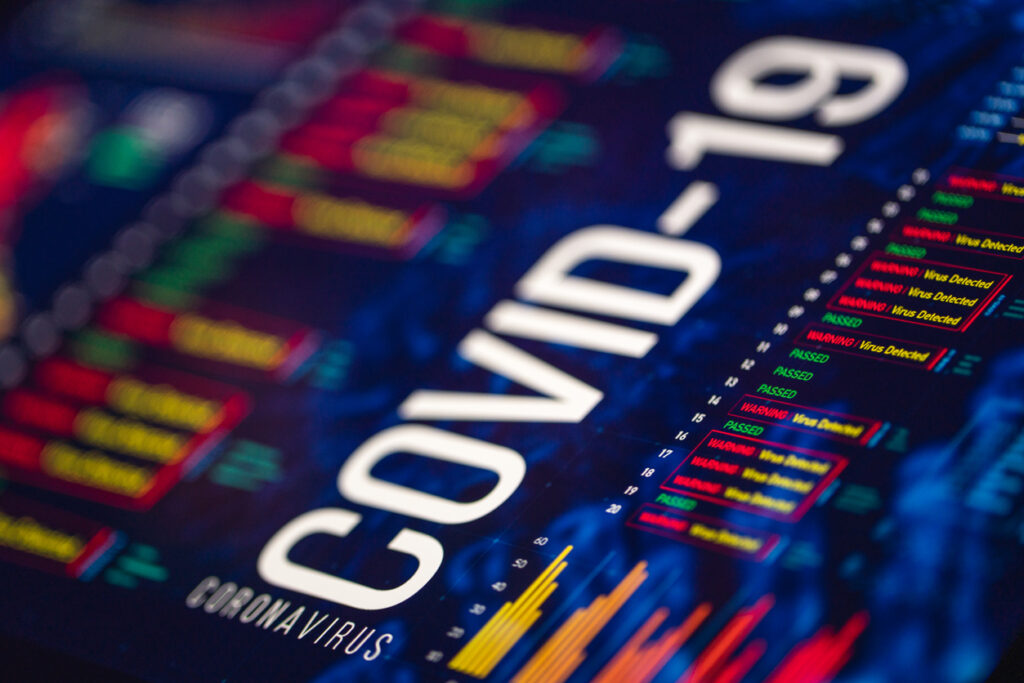Last week, a headline in The Economist caught my attention: “in a pandemic, a chief people officer can make or break a company”. As the co-founder of a company built to serve HR leaders, this is something I have always instinctively believed.
Our company’s privileged position provides us with a window into the pressures and challenges that the current Covid-19 pandemic is creating for HR teams. It has enabled us to see first hand the bold decision-making, innovative thinking and compassionate leadership that has characterised their respective responses.
It has also proven that people analytics data is a critical platform for all aspects of a crisis response strategy.
Acquiring intelligence
A military general knows battlefield success and failure is heavily influenced by access to accurate and timely information. Similarly, HR chiefs need up-to-the-minute data to effectively respond to the Covid-19 threat.
As a first step, it is critical that all business decision makers have access to the demographic and location data required to identify high-risk employees. The ability to quickly find and communicate with employees over a certain age or living in current outbreak hotspots like Spain or Italy is essential if leaders are to make swift, smart decisions under fire.
Extraordinary circumstances require out-of-the-box thinking. Data can help to channel innovation and creativity towards the right problems.
Similarly, without a strong grasp of the disease’s latest development, it’s tough for business leaders to make informed judgments about employee safety and business continuity. For that reason, integrating public health dashboards that track the spread of coronavirus into existing people analytics systems is a priority. This Covid-19 map from John Hopkins University is an example.
There are also data sets that will provide some level of visibility on how Covid-19 is impacting the organisation on a daily basis. Absenteeism is the obvious one, but it is retrospective rather than predictive. Another option is distributing a daily ‘Pulse’ survey simply asking ‘how are you feeling today?’ This will provide business leaders with a more dynamic picture of how team sickness might impact their departments in the days and weeks ahead.
Prioritising
One of the biggest challenges in any crisis response scenario is prioritisation. With so many fires to extinguish, it’s hard to know where to focus the organisation’s resources. Employee data is a critical part of that decision-making process.
One common example of prioritisation is identifying ‘business critical’ employees without whom the company would cease to operate effectively. Accurate, accessible people data can help to locate these individuals, assess their risk exposure and inform contingency plans in the event that they, or a member of their close family, are taken ill. For example, are there members of their team with strong competency scores that could deputise in their absence?
Another emerging area of people analytics that can assist prioritisation is organisational network analysis, which uses calendar, email, instant messaging, sociometric badges and knowledge sharing application data to identify the most connected and socially influential employees in the company. These ‘network maps’ can effectively act as ‘cheat sheets’ in a crisis by revealing which employees to prioritise when cascading information and implementing policies at speed and scale.
Creative problem solving
Extraordinary circumstances require out-of-the-box thinking. Data can help to channel innovation and creativity towards the right problems.
Although responsible employers will have already sent their high-risk employees home, there are certain industries where this isn’t possible. Supermarkets can’t provide essential supplies for the local community without dedicated in-store staff. Gas companies can’t fix a boiler without sending technicians into homes. In these situations, creating new shift patterns that give the most vulnerable the quietest hours and autonomous jobs is an example of imaginative problem solving.
Similarly, HR chiefs are also finding creative ways to cover absences. By triangulating skills and training data from across the company, it is possible to find individuals that are working in one department that could potentially play a role in another. For example, a UK based customer service representative that speaks Spanish could help cover for an absent member of staff in the Madrid office.
Measuring impact
During Covid-19, the frequency of internal communications is increasing and so too are virtual initiatives designed to keep morale up. In order to assess the effectiveness of these activities, some organisations are partnering with providers to monitor the morale of their employee base in real-time through Pulse surveys. This enables them to adjust their messaging and tactics in real-time.
Planning ahead
No matter how bleak the medium term predictions are, at some point humanity will find a way to fight Covid-19 and the business climate will adjust to what commentators are already referring to as ‘the new normal’. Effective HR professionals already have half an eye on this horizon, and are implementing strategies to ensure they are out of the blocks as quickly as possible.
As the green shoots of recovery start to appear, closely monitoring the Covid-19 infection curve will enable business leaders to identify regions, like China, that are slowly beginning to emerge from its grip. Armed with this knowledge, and using existing skill and competency data from the HR and L&D teams, companies will be able to temporarily distribute work from embattled cities into recovering ones to keep productivity as high as possible.
In the medium term, HR leads that have taken steps to capture productivity, performance and wellbeing data from across their business will possess a rich pool of insights on the pros and cons of flexible working post-crisis. According to Albert Pang, President of Apps Run The World, 44% of companies globally do not currently allow remote working. The qualitative data gathered during this forced experiment may prompt them to reassess, or employee pressure may force their hand.
[cm_form form_id=’cm_65a14c3f5da64′]
Finally The Economist article I mentioned earlier also included another sentence that hit home. It described HR as “a function often unfairly referred to as soft”. Powered by people analytics, Covid-19 is proving that the majority of global HR chiefs are anything but. The coronavirus outbreak will serve as a not-so-gentle reminder to organisations everywhere just how mission-critical the HR department really is.
Interested in this topic? Read Coronavirus: the role of the unexpected remote manager.








